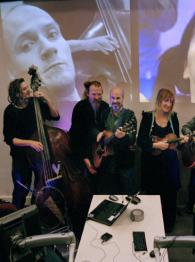
About the Project
This project is one of the 2012 WISE Awards finalists.
SMARTlab’s main aim is to research and innovate technology for social change. The InterFACES Project has been developed in close collaboration with the charity SpecialEffect. SMARTlab is currently based at University College Dublin (UCD) and was previously at the University of East London where the project began. The lab hosts projects and academic programs that encourage teams of artists and cultural-sector creatives to work closely across disciplinary boundaries to invent new models and tools for learning.
Context and Issue
As part of this remit, SMARTlab aims to improve services and support structures and tools for lifelong learners and non-standard students, including people with disabilities as one of its main groups.
Solution and Issue
The InterFACES research project is one of SMARTlab’s core activities, aimed at creating the tools that can empower free expression by students and scholars of even the most limited physical mobility. InterFACES uses eye movement as a control mechanism for communications by people with little or no other voluntary muscle movement. The SMARTlab research team has made remarkable progress in the area of Assistive Technology, and InterFACES exists as an outstanding model of customizable tools that have transformed the learning opportunities of students with the most complex disabilities. In particular, InterFACES is focusing on gaze-controlled technology. For several of the most severely disabled students, the only part of their bodies over which they have any effective control whatsoever is their eye movement. Trying to control the computer in any other way is slow, tiring and often painful. However, by using eye movement alone to control the computer, students are offered quicker, easier and more effective opportunities for communication, learning and self-expression, including music, art and design.
Future Developments
The InterFACES project, working with Dr. Mick Donegan from SpecialEffect, has extended its reach and improved the life quality of other members of the general public with limited movement.


